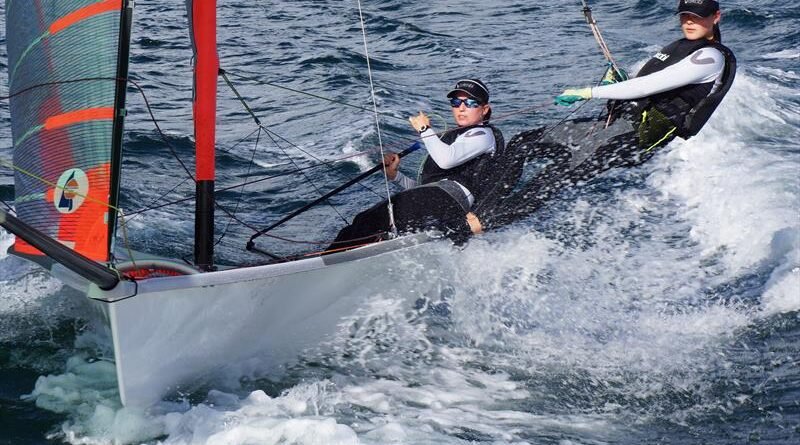What to Wear When Dinghy Sailing to Stay Warm and Dry
Dinghy sailing is a fun and challenging way to explore open waters. It offers a unique way to experience the wind and waves and to get close to nature. Although it requires skill and patience, it can be enjoyed by people of all ages and experience levels.
When engaging in the thrilling sport of dinghy sailing, it’s essential to dress appropriately. Inappropriate attire can lead to being uncomfortable, restricted in movement and not performing at your peak.
A lot can happen quickly in a dinghy, which is built to move quickly through the water and change direction with the push or pull of a sail. People who are new to dinghy sailing have been thrown overboard into the chilly water, chafed by a rope, and bruised on a metal spar in an instant. Being dressed in appropriate, quality sailing clothes can make all this fun.
Nowadays, you can find a variety of sailing clothes available on the market, which is sometimes half the problem with deciding on the proper ones.
Ultimately, the type of clothing you need to go dinghy sailing will be greatly influenced by the weather and climate. Whatever you choose, it’s critical that your gear is suited to the conditions you anticipate encountering.
Table of Contents
Wetsuits and Dry Suits
When you’re new to the sport, learning to sail on a dinghy can be an amazing experience. Feeling the wind in your hair and the ocean spray on your face while you hike your boat is an absolute blast. However, if you’re not dressed for the weather, your adventure can become chilly and wet very quickly. Investing in a dinghy sailing wetsuit is a great way to ensure you stay warm and dry while out on the water.
A sailing wetsuit is designed to keep you warm by creating a pocket of water between the neoprene material and your skin. This forms an insulating layer that prevents your body temperature from dropping.
Wearing a “Long John” wetsuit also referred to as a “Skiff Suit,” is the best way to layer up. These garments allow you to sail with free arms because they have long legs but no arms. To keep your arms covered and warm, get a hydrophobic fleece, which keeps you warm but dries out very quickly if they get wet, typically in under 15 minutes.
On extremely cold days or when it’s windy, it’s a good idea to layer a windproof sailing spray top over your wetsuit. It shields you from the boat’s inevitable spray as well as the wind chill, which a wetsuit isn’t very good at.
A dinghy sailing drysuit, on the other hand, is ideal on days with a lot of sprays, when the weather is gloomy and is necessary if you intend to sail in the winter. The fact that dry suits keep you insulated and totally dry also means that you can wear layers of warm fleece underneath to improve warmth. With a dry suit, you won’t get wet even if you slip and fall into the water.
For the hot summer days, a shortie wetsuit, which is devoid of arms and legs, will be more suitable.
Smock Top
It’s a great idea to have a smock top at hand for when the weather suddenly changes for the worse. The best smock tops for dinghy sailing are those that have a zippered opening near the neck that can be opened to let hot air out as you warm up. The wrist cuffs and hip bands of the majority of high-quality dinghy sailing spray tops are sealed with neoprene or rubber to keep water from rushing up the arms or back.
Gloves
Sailing can be painful if your hands become cold and wet because they will slide and slip on the sheets and ropes. To avoid blisters and to keep your hands warm and dry, consider investing in a pair of sailing gloves. Keep in mind that basic sailing gloves only prevent blisters from forming whereas neoprene gloves (also referred to as winter sailing gloves) prevent blisters from developing while also keeping your hands warm.
Sailing Shoes
The type of sailing you will be doing, the season, and the weather will all influence your choice of wetsuit boots. On a warm day and in calm water, neoprene shoes work fine because the soles have enough traction to keep you from slipping on the deck. They are also a great option for learning and trapezing.
As your sailing skills get improved, you’ll need a pair of boots that provide traction and protection over the top of the foot and lower shin. For the colder months, get ankle-high sailing boots. These are warmer than summer overshoes because they are made of thicker 5mm rubber and neoprene to keep your feet extra warm.
It doesn’t matter how much experience you have—always wear a buoyancy aid. The majority of sailing clubs will require it. This will keep you afloat in the event that you do fall overboard. The majority of sailing schools will lend you one for the day, but if you plan to sail frequently or own a boat, you should buy your own.
A Buoyancy Aid
It doesn’t matter how much experience you have—always wear a buoyancy aid. The majority of sailing clubs will require it. This will keep you afloat in the event that you do fall overboard. The majority of sailing schools will lend you one for the day, but if you plan to sail frequently or own a boat, you should get your own.
When selecting a buoyancy aid, aesthetics are just as important as comfort. They are all required by EU law to have a buoyancy of 50N, so even a cheap one will still function. In contrast, the more you spend, the more features you get: more adjustability, better fabric quality, foam panels that are molded rather than flat, pockets, key clips, and reflective piping.
Accessories
Make sure you wear a hat, sunscreen, and polarized sunglasses during the hot summer months to shield your skin and eyes from the sun’s harmful UV rays. Sunglasses for sailing are frequently polarized and float should they fall off. However, you can purchase glasses retainers to keep your prescription glasses or regular sunglasses on your head if you prefer. Should they fall off, floating glasses retainers will cause them to float.
For more travel-related information visit Travel World Fashion.




